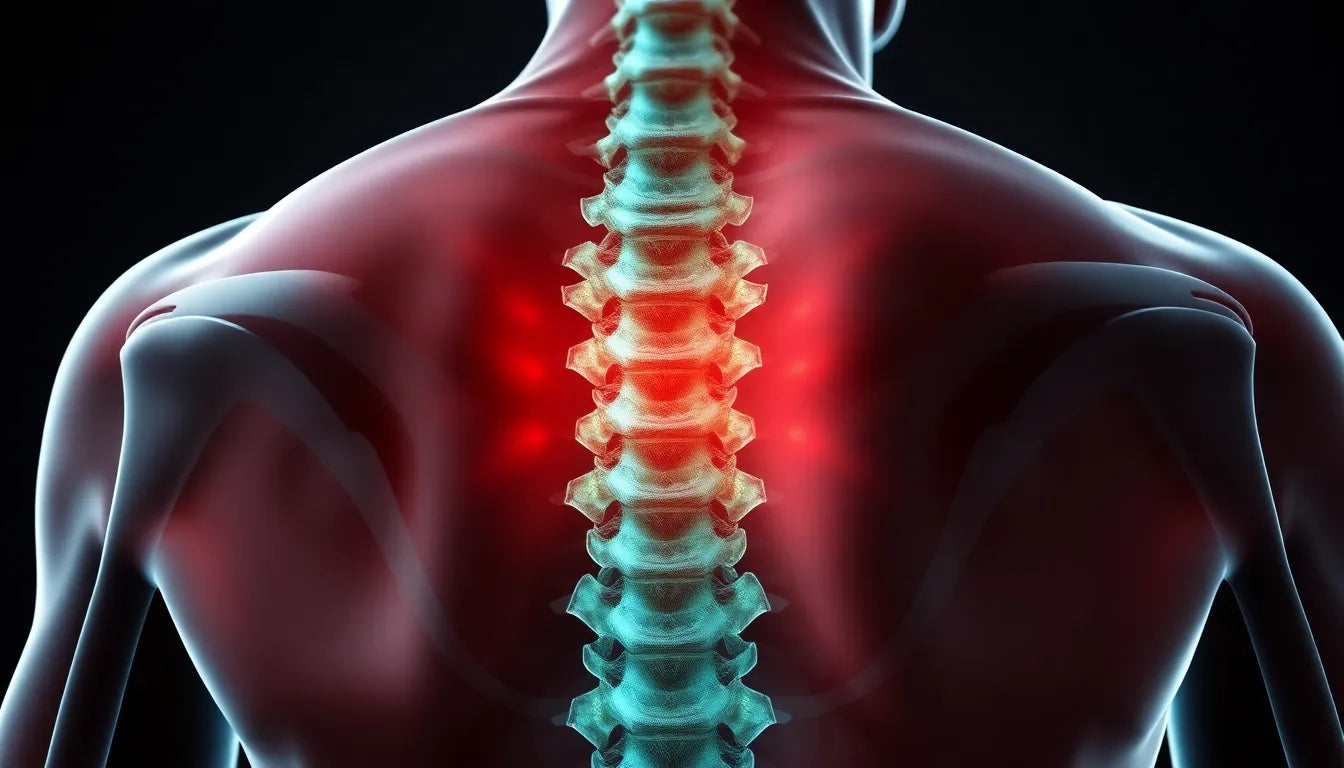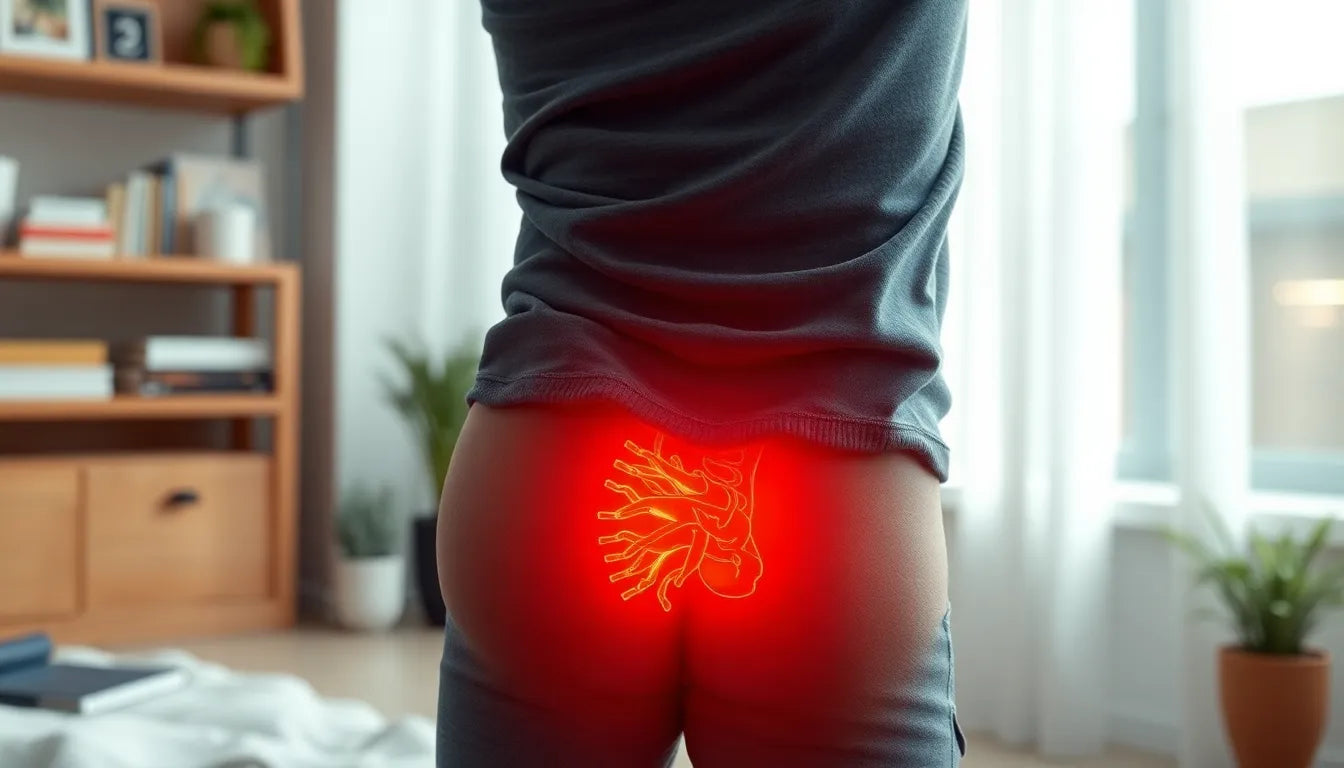Spinal health is as crucial for our canine companions as it is for humans. Among the various spinal issues that can affect dogs, herniated discs stand out as a common yet serious condition. This ailment, often referred to as Intervertebral Disc Disease (IVDD), can significantly impact a dog's quality of life. Understanding the nuances of this condition is essential for pet owners who want to ensure their furry friends lead happy, healthy lives.
Understanding herniated discs in dogs
Intervertebral Disc Disease (IVDD) is a condition that affects the spinal discs in dogs, leading to pain and mobility issues. These discs act as cushions between the vertebrae, absorbing shocks and providing flexibility to the spine. When a disc herniates, it can press against the spinal cord, causing a range of symptoms from mild discomfort to severe paralysis. IVDD is particularly prevalent in certain breeds, such as Dachshunds, Bulldogs, and Beagles, due to their genetic predisposition and body structure.
There are two primary types of herniated discs in dogs: Hansen Type I and Hansen Type II. Hansen Type I is characterized by a sudden rupture of the disc, often occurring in younger dogs and those of chondrodystrophic breeds. In contrast, Hansen Type II involves a more gradual protrusion of the disc, typically affecting older dogs. Both types can lead to significant pain and require prompt veterinary attention to prevent further complications.
The goal of this post
The purpose of this post is to equip pet owners with the knowledge needed to recognize the early signs of herniated discs in their dogs. By understanding the symptoms and treatment options, owners can make informed decisions about their pet's care. Additionally, this post aims to highlight the importance of supporting a dog's recovery through appropriate interventions and lifestyle adjustments. Whether through conservative management or surgical intervention, knowing how to respond to IVDD can make a significant difference in a dog's recovery and overall well-being.
medical explanation of herniated discs in dogs
The canine spine is a complex structure composed of vertebrae and intervertebral discs, which serve as shock absorbers and facilitate movement. These discs have a tough outer layer and a gel-like center. When a herniated disc occurs, the inner material protrudes, pressing against the spinal cord. This pressure can disrupt nerve signals, leading to various symptoms, depending on the severity and location of the herniation.
Veterinarians often use a grading system to assess the severity of Intervertebral Disc Disease (IVDD), ranging from Grade 1 to Grade 5. Grade 1 involves mild pain with no neurological deficits, while Grade 5 indicates complete paralysis and loss of deep pain sensation. This grading helps in determining the appropriate treatment plan and prognosis for the affected dog.
recognizing symptoms of herniated discs
Pet owners should be vigilant in monitoring their dogs for signs of herniated discs. Common symptoms include:
- Spinal pain: Dogs may exhibit low head carriage or a rounded back as they attempt to alleviate discomfort.
- Reluctance to move: Affected dogs might be hesitant to engage in activities they once enjoyed, such as playing or climbing stairs.
- Loss of coordination: Weakness or wobbliness, particularly in the hind limbs, may indicate nerve compression.
- Paralysis: In severe cases, dogs can experience partial or complete paralysis.
- Incontinence: Fecal or urinary incontinence can occur if the nerves controlling these functions are affected.
importance of early diagnosis and veterinary care
Early diagnosis of herniated discs is crucial for effective management and recovery. Veterinary professionals play a vital role in diagnosing IVDD through a combination of physical examinations and diagnostic imaging. X-rays can reveal changes in the spine, but MRI scans provide a more detailed view of the spinal cord and discs, aiding in accurate diagnosis.
Prompt veterinary consultation ensures that the condition is identified early, allowing for timely intervention that can prevent further deterioration and improve the chances of recovery.
treatment options for herniated discs in dogs
conservative management
For less severe cases, conservative management may be recommended. This approach typically involves:
- Strict crate rest: Limiting movement for 4-6 weeks helps reduce inflammation and allows the disc to heal.
- Medications: Pain relief and anti-inflammatory drugs can alleviate discomfort and swelling.
- Weight management: Maintaining a healthy weight reduces stress on the spine.
- Physical therapy: Rehabilitation exercises can improve mobility and strengthen muscles supporting the spine.
surgical intervention
In more severe cases, or when conservative treatment fails, surgical intervention may be necessary. Procedures such as hemilaminectomy and laminectomy involve removing part of the vertebra to relieve pressure on the spinal cord. These surgeries have high success rates, with over 95% of dogs regaining normal or near-normal function.
While surgical costs can range from $2,000 to $5,000, the potential for a full recovery often justifies the expense for many pet owners.
By understanding the medical aspects of herniated discs and the available treatment options, pet owners can make informed decisions that significantly impact their dog's quality of life. Early intervention, combined with appropriate care, can lead to a successful recovery and a return to normal activities for affected dogs.
Recovery and support for dogs with herniated discs
Once a dog has been diagnosed and treated for a herniated disc, the recovery process becomes a crucial phase. Rehabilitation can be a lengthy journey, requiring patience and dedication from pet owners. The use of ergonomic aids, such as specially designed dog beds and harnesses, can significantly enhance a dog's comfort and support during recovery. These products help maintain proper spinal alignment and reduce pressure on affected areas, promoting healing and preventing further injury.
In addition to physical aids, a structured rehabilitation program may include physical therapy exercises tailored to the dog's specific needs. These exercises aim to restore strength, improve mobility, and enhance overall well-being. It's essential for pet owners to follow veterinary guidance closely and ensure their dog receives adequate rest and gentle activity as part of their recovery regimen.
Supporting pet owners emotionally
Caring for a dog with a herniated disc can be emotionally challenging for pet owners. The stress of managing treatment, costs, and the uncertainty of recovery can be overwhelming. It's important to acknowledge these feelings and seek support when needed. Connecting with other pet owners who have experienced similar challenges can provide valuable insights and emotional comfort.
Creating a positive and nurturing environment at home is also vital. Providing your dog with plenty of love, attention, and reassurance can help them feel secure and supported. Ensuring a calm and stress-free environment will not only aid your dog's recovery but also help you manage the emotional demands of caregiving.
Case studies and testimonials
Real-life examples of dogs that have overcome herniated discs can offer hope and guidance to pet owners facing similar situations. For instance, a Dachshund named Max underwent surgery for a Hansen Type I herniated disc and, with diligent post-operative care and physical therapy, regained full mobility. His owner credits the success to early intervention and the use of ergonomic aids that supported Max's recovery.
Similarly, Bella, a Bulldog with Hansen Type II IVDD, benefited from conservative management and lifestyle adjustments, including weight management and a supportive dog bed. Her gradual improvement highlights the importance of a comprehensive approach to managing herniated discs.
Conclusion
Understanding herniated discs in dogs and the importance of early intervention can make a significant difference in a pet's quality of life. By recognizing symptoms early, seeking prompt veterinary care, and supporting recovery with appropriate measures, pet owners can enhance their dog's chances of a full and healthy life. Whether through ergonomic aids, physical therapy, or emotional support, every effort contributes to the well-being of dogs affected by this condition.
Frequently Asked Questions
What causes herniated discs in dogs?
Herniated discs in dogs can be caused by genetic predispositions, age-related degeneration, and physical trauma. Certain breeds, such as Dachshunds and Bulldogs, are more susceptible due to their body structure and genetic factors.
Can herniated discs heal on their own?
In some cases, herniated discs can heal with conservative management, which includes rest, medication, and physical therapy. However, severe cases may require surgical intervention to prevent permanent damage and improve recovery prospects.
How can I prevent herniated discs in my dog?
Preventive measures include maintaining a healthy weight, providing a balanced diet, and avoiding high-impact activities that strain the spine. Using ergonomic products, such as supportive dog beds, can also help reduce the risk of disc herniation.
What are the long-term effects of IVDD in dogs?
Long-term effects of IVDD can vary depending on the severity and treatment. Some dogs may experience residual weakness or mobility issues, while others may recover fully with appropriate care. Ongoing monitoring and lifestyle adjustments are crucial for managing long-term impacts.
Are there specific breeds more prone to IVDD?
Certain breeds are more prone to IVDD due to their genetic makeup and body structure. Breeds with a higher risk include Dachshunds, Bulldogs, Beagles, and Cocker Spaniels. Pet owners of these breeds should be particularly vigilant in monitoring for symptoms.
Sources
- PetMD. "IVDD (Intervertebral Disc Disease) in Dogs."
- PDSA. "IVDD/slipped disc in dogs."
- Vet Specialists UK. "Intervertebral Disc Herniation or 'slipped disc' Fact Sheet."
- Berkeley Dog and Cat. "Can a dog recover from IVDD without surgery?"
- Small Animal Center Arndt. "Herniated disc in dogs."
- SASH Vets. "Slipped Discs & IVDD in Dogs."


















